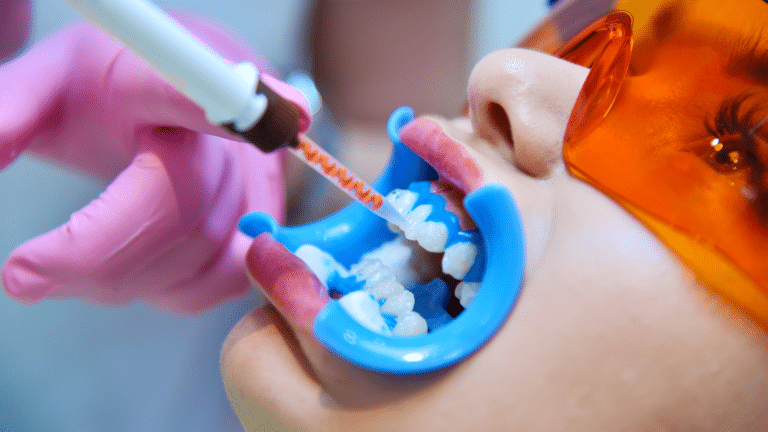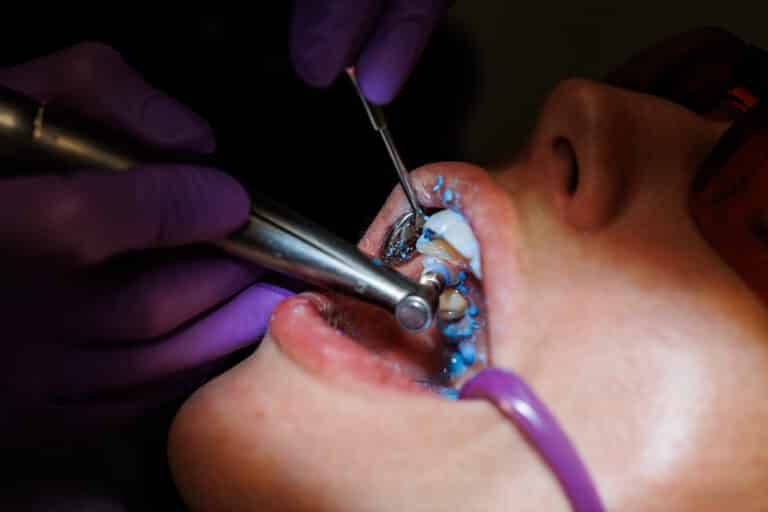Flossing is more than just a quick fix for removing food stuck between your teeth—it’s an essential step in maintaining optimal oral health. While brushing cleans the surface of your teeth, flossing reaches the hidden plaque and bacteria that can lead to cavities, gum disease, and bad breath. Making flossing a daily habit not only keeps your smile fresh but also supports healthier gums and overall well-being.
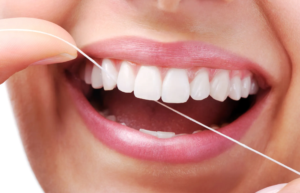
Many people underestimate the long-term impact of flossing, viewing it as an optional extra rather than an essential habit. But did you know that maintaining healthy gums can reduce the risk of more serious dental issues, including tooth loss and costly treatments in the future? By using the right flossing techniques and choosing the best type of floss for your needs, you can make a significant difference to your oral hygiene. In this post, we’ll explore why flossing is so important, how to do it correctly, and how to turn it into a seamless part of your daily self-care routine.
A Brief History of Floss: From Inception to Today
Flossing has been around much longer than you might think, and it wasn’t always the convenient, string-based tool we use today.
The Rise of Nylon and Mass Production
In the 1940s, the invention of nylon by Wallace Carothers revolutionised flossing. Nylon was stronger and more durable than silk, and it could be mass-produced at a fraction of the cost. As a result, dental floss became more accessible to the public and began to be sold in stores across the world.
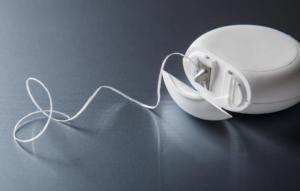
By the 1970s, the flossing revolution was in full swing. Brands like Oral-B and Johnson & Johnson began manufacturing dental floss in a variety of materials, including waxed and unwaxed options, offering a solution for every type of user.
Why Flossing Teeth is a Game-Changer
Flossing isn’t just about clearing food debris; it plays a critical role in the health of your gums and teeth. Here’s why incorporating flossing into your routine can transform your oral health.

1. Flossing Prevents Gum Disease
If you’re skipping flossing, you might be leaving behind plaque and bacteria that can lead to gum disease. Plaque that builds up along the gumline can result in gingivitis, the early stage of gum disease. If left unchecked, it can progress to periodontitis, a more severe condition that can cause tooth loss. Flossing teeth helps remove plaque and debris from between your teeth and gums, reducing the risk of gum disease.
2. Flossing Fights Cavities
Did you know cavities are more likely to form between your teeth, where toothbrush bristles can’t reach? Flossing helps remove the plaque and food particles that can lead to cavities. When you floss regularly, you’re keeping those hidden spaces clean, preventing decay before it starts.
3. Flossing Boosts Fresh Breath
Food particles stuck between your teeth are a common cause of bad breath. Flossing removes these particles, keeping your mouth fresh and free from lingering odours. For long-lasting freshness, make sure you floss before using mouthwash or brushing your teeth.
4. Flossing Promotes Overall Health
Emerging research has shown that poor oral health is linked to various systemic health conditions, such as heart disease and diabetes. By flossing, you’re not just caring for your mouth but your entire body. The act of flossing helps reduce inflammation in the mouth, which can positively affect your overall health.
How to Floss Properly: A Step-by-Step Guide
Flossing sounds simple, but many people don’t do it correctly. Here’s a quick guide on how to floss like a pro to get the most out of every session.
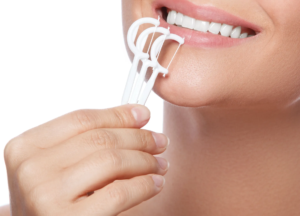
1. Cut the Right Length of Floss
Aim for about 18 inches of floss—this will give you enough length to use a fresh section for each tooth, preventing the transfer of plaque or bacteria between teeth.
2. Proper Grip on the Floss
Hold the floss tightly between your thumb and index finger, leaving just a small gap (about two inches) between them. This gives you control and precision while flossing.
3. Slide the Floss Gently Between Teeth
Insert the floss gently between your teeth. Avoid snapping it down, as this can hurt your gums. Instead, use a gentle sawing motion to move the floss between each tooth.
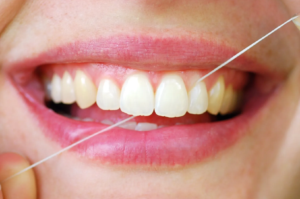
4. Form a C-Shape with the Floss
When the floss is between your teeth, curve it around the side of each tooth, forming a “C” shape. Gently move the floss up and down along the side of the tooth to remove plaque and food particles.
5. Move to the Next Tooth
After flossing one tooth, unwind a fresh section of floss and repeat the process for each tooth. Don’t forget to floss the backs of your last molars, as these areas are often missed.
6. Rinse and Refresh After Flossing
Once you’ve finished, rinse your mouth with water or mouthwash to flush out any debris that’s been dislodged by the flossing process.
Different Types of Floss: Which One Is Best for You?
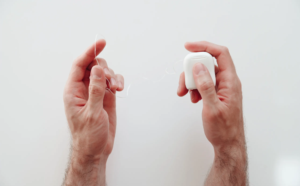
Flossing isn’t a one-size-fits-all practice. The type of floss you choose depends on your personal preference and dental needs. Let’s break down the different options:
1. Waxed Dental Floss
Waxed floss is smooth and slides easily between teeth. It’s ideal for people with tightly spaced teeth or those new to flossing. It’s also less likely to shred or break.
2. Unwaxed Dental Floss
Unwaxed floss is thinner and can sometimes feel more effective in getting between tight spaces. If you’re looking for a floss that provides more friction to remove plaque, unwaxed floss may be your best option.
3. Dental Floss Sticks
Floss sticks are ideal for anyone who finds traditional floss challenging to hold or manoeuvre. They’re small, portable, and easy to use—great for people on the go or those with limited dexterity.
4. Floss for Braces
For people with braces, flossing can be tricky. Special floss designed for braces has a thicker strand, which makes it easier to work around wires and brackets.
5. Toothpick Floss
If you prefer using a more rigid tool, toothpick floss offers the combined benefits of a toothpick and floss. These tools are easy to handle and great for cleaning between teeth without needing traditional floss.
How Often Should You Floss?
Flossing should be a part of your daily routine—ideally once a day, preferably before bed. This ensures that food particles and plaque are removed before you sleep, preventing bacteria from multiplying overnight. If you have braces or are more prone to gum disease, consider flossing more often.
Final Thoughts: The Importance of Flossing
Flossing is often overlooked, but it’s an essential step in maintaining optimal oral health. It’s not just about removing food—it’s about preventing gum disease, reducing the risk of cavities, promoting fresh breath, and improving overall health. By choosing the right type of floss and mastering the proper technique, you can ensure that you’re making the most of your flossing routine. So, floss like a pro and enjoy a healthier, fresher smile!
Ready for a Healthier Smile?
Flossing is just one part of maintaining a healthy smile, but professional insights and guidance can take your dental care to the next level.
At WeSmile Dental, we offer a range of services to support your oral health, including:

Preventive Care
To help avoid future dental issues, such as cavities or gum disease
Dental Fillings
Restorative care for cavities with options including tooth-coloured fillings for a natural look.
Professional Cleanings
To ensure plaque and tartar are properly removed
Periodontal Care
Tor those who may be at risk of gum disease or need additional care
Teeth Whitening
Professional whitening treatments to brighten your smile and remove stains caused by food, drinks, or ageing.
Orthodontic Consultations
To assist with specialised care for braces and dental work
Restorative Treatments
Solutions like crowns, bridges, and dentures to restore damaged or missing teeth.

Book Your Appointment with WeSmile Dental Today!
Whether you need advice on flossing techniques, tips for preventing gum disease, or general oral care recommendations, our team of professional dentists is here to provide the support you need.
Don’t wait until problems arise—take charge of your oral health today! Book your appointment with WeSmile Dental and start your journey towards a healthier, brighter smile.
Contact us today and let our dentists guide you on the path to optimal oral health!
FAQs About Flossing
1. Is flossing really necessary if I brush well?
Yes! Brushing cleans the surface of your teeth, but flossing removes plaque and food particles from between teeth where a toothbrush cannot reach. Skipping flossing increases the risk of cavities and gum disease.
2. What should I do if my gums bleed when I floss?
Bleeding gums may indicate inflammation due to plaque build-up. If you are new to flossing, the bleeding should stop within a few days. If it persists, consult your dentist.
3. Can I use a water flosser instead of string floss?
Water flossers are a great addition to your routine, especially if you have braces or sensitive gums, but they may not remove plaque as effectively as string floss. Using both is ideal.
4. Is it better to floss before or after brushing?
Flossing before brushing helps remove plaque and debris, allowing fluoride from toothpaste to reach between teeth more effectively.
5. How do I know if I am flossing correctly?
Floss gently between teeth, forming a “C” shape around each tooth and moving it up and down. Avoid snapping it against your gums, as this can cause irritation.
6. What happens if I do not floss?
Skipping flossing allows plaque to build up between teeth, leading to bad breath, cavities, and gum disease. Over time, this can result in tooth loss and other oral health issues.

